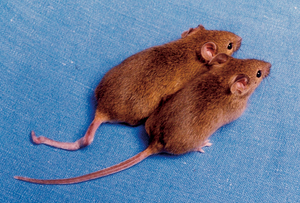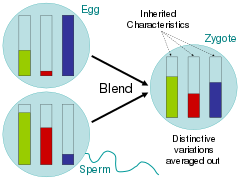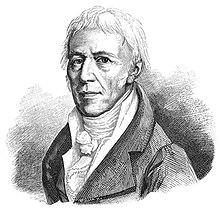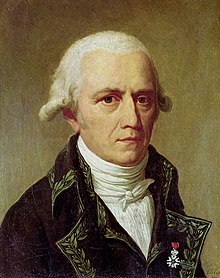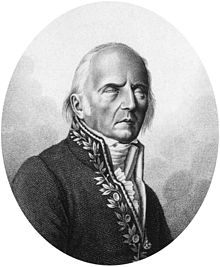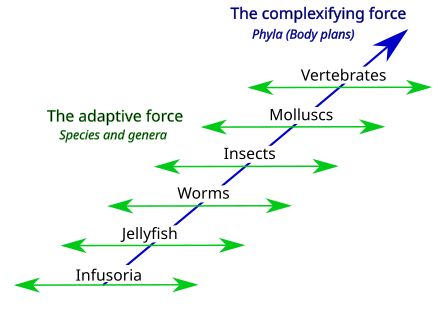Genetically identical mice with different DNA methylation patterns causing kinks in the tail of one but not the other.
Transgenerational epigenetic inheritance is the transmission
of information from one generation of an organism to the next (i.e.,
parent–child transmission) that affects the traits of offspring without
alteration of the primary structure of DNA (i.e., the sequence of nucleotides)—in other words, epigenetically. The less precise term "epigenetic inheritance"
may be used to describe both cell–cell and organism–organism
information transfer. Although these two levels of epigenetic
inheritance are equivalent in unicellular organisms, they may have
distinct mechanisms and evolutionary distinctions in multicellular
organisms.
For some epigenetically influenced traits, the epigenetic marks can be induced by the environment and some marks are heritable, leading some to view epigenetics as a relaxation of the rejection of the inheritance of acquired characteristics (Lamarckism).
Epigenetic categories
Four general categories of epigenetic modification are known:
- self-sustaining metabolic loops, in which a mRNA or protein product of a gene stimulates transcription of the gene; e.g. Wor1 gene in Candida albicans
- structural templating in which structures are replicated using a template or scaffold structure on the parent; e.g. the orientation and architecture of cytoskeletal structures, cilia and flagella, prions, proteins that replicate by changing the structure of normal proteins to match their own
- chromatin marks, in which methyl or acetyl groups bind to DNA nucleotides or histones thereby altering gene expression patterns; e.g. Lcyc gene in Linaria vulgaris described below
- RNA silencing, in which small RNA strands interfere (RNAi) with the transcription of DNA or translation of mRNA; known only from a few studies, mostly in Caenorhabditis elegans
Inheritance of epigenetic marks
Epigenetic variation may take one of four general forms. Others may
yet be elucidated, but currently self-sustaining feedback loops, spatial
templating, chromatin marking, and RNA-mediated pathways modify
epigenes at the level of individual cells. Epigenetic variation within
multicellular organisms may be endogenous, generated by cell–cell
signaling (e.g. during cell differentiation early in development), or
exogenous, a cellular response to environmental cues.
Removal vs. retention
In
sexually reproducing organisms, much of the epigenetic modification
within cells is reset during meiosis (e.g. marks at the FLC locus
controlling plant vernalization), though some epigenetic responses have been shown to be conserved (e.g. transposon methylation in plants).
Differential inheritance of epigenetic marks due to underlying maternal
or paternal biases in removal or retention mechanisms may lead to the
assignment of epigenetic causation to some parent of origin effects in
animals and plants.
Reprogramming
In
mammals, epigenetic marks are erased during two phases of the life
cycle. Firstly just after fertilization and secondly, in the developing
primordial germ cells, the precursors to future gametes.
During fertilization the male and female gametes join in different cell
cycle states and with different configuration of the genome. The
epigenetic marks of the male are rapidly diluted. First, the protamines
associated with male DNA are replaced with histones from the female's cytoplasm,
most of which are acetylated due to either higher abundance of
acetylated histones in the female's cytoplasm or through preferential
binding of the male DNA to acetylated histones. Second, male DNA is systematically demethylated in many organisms, possibly through 5-hydroxymethylcytosine.
However, some epigenetic marks, particularly maternal DNA methylation,
can escape this reprogramming; leading to parental imprinting.
In the primordial germ cells
(PGC) there is a more extensive erasure of epigenetic information.
However, some rare sites can also evade erasure of DNA methylation.
If epigenetic marks evade erasure during both zygotic and PGC
reprogramming events, this could enable transgenerational epigenetic
inheritance.
Recognition of the importance of epigenetic programming to the
establishment and fixation of cell line identity during early
embryogenesis has recently stimulated interest in artificial removal of
epigenetic programming. Epigenetic manipulations may allow for restoration of totipotency in stem cells or cells more generally, thus generalizing regenerative medicine.
Retention
Cellular
mechanisms may allow for co-transmission of some epigenetic marks.
During replication, DNA polymerases working on the leading and lagging
strands are coupled by the DNA processivity factor proliferating cell nuclear antigen (PCNA), which has also been implicated in patterning and strand crosstalk that allows for copy fidelity of epigenetic marks.
Work on histone modification copy fidelity has remained in the model
phase, but early efforts suggest that modifications of new histones are
patterned on those of the old histones and that new and old histones
randomly assort between the two daughter DNA strands.
With respect to transfer to the next generation, many marks are removed
as described above. Emerging studies are finding patterns of epigenetic
conservation across generations. For instance, centromeric satellites resist demethylation.
The mechanism responsible for this conservation is not known, though
some evidence suggests that methylation of histones may contribute.
Dysregulation of the promoter methylation timing associated with gene
expression dysregulation in the embryo was also identified.
Decay
Whereas the mutation rate in a given 100-base gene may be 10−7 per generation, epigenes may "mutate" several times per generation or may be fixed for many generations.
This raises the question: do changes in epigene frequencies constitute
evolution? Rapidly decaying epigenetic effects on phenotypes (i.e.
lasting less than three generations) may explain some of the residual
variation in phenotypes after genotype and environment are accounted
for. However, distinguishing these short-term effects from the effects
of the maternal environment on early ontogeny remains a challenge.
Contribution to phenotypes
The relative importance of genetic and epigenetic inheritance is subject to debate. Though hundreds of examples of epigenetic modification of phenotypes have been published, few studies have been conducted outside of the laboratory setting.
Therefore, the interactions of genes and epigenes with the environment
cannot be inferred despite the central role of environment in natural
selection. Experimental methodologies for manipulating epigenetic
mechanisms are nascent (e.g.)
and will need rigorous demonstration before studies explicitly testing
the relative contributions of genotype, environment, and epigenotype are
feasible.
In plants
b1 paramutation
in maize. The B' allele converts the B-I allele to a B'-like state
after interaction in F1 heterozygotes. These converted alleles gain the
ability to convert naive B-I alleles in subsequent generations resulting
in all progeny displaying lightly pigmented phenotype.
Studies concerning transgenerational epigenetic inheritance in plants have been reported as early as the 1950s. One of the earliest and best characterized examples of this is b1 paramutation in maize. The b1 gene encodes a basic helix-loop-helix transcription factor that is involved in the anthocyanin
production pathway. When the b1 gene is expressed, the plant
accumulates anthocyanin within its tissues, leading to a purple
coloration of those tissues. The B-I allele (for B-Intense) has high
expression of b1 resulting in the dark pigmentation of the sheath and
husk tissues while the B' (pronounced B-prime) allele has low expression
of b1 resulting in low pigmentation in those tissues. When homozygous B-I parents are crossed to homozygous B', the resultant F1 offspring all display low pigmentation which is due gene silencing of b1.
Unexpectedly, when F1 plants are self-crossed, the resultant F2
generation all display low pigmentation and have low levels of b1
expression. Furthermore, when any F2 plant (including those that are
genetically homozygous for B-I) are crossed to homozygous B-I, the
offspring will all display low pigmentation and expression of b1. The lack of darkly pigmented individuals in the F2 progeny is an example of non-Mendelian inheritance and further research has suggested that the B-I allele is converted to B' via epigenetic mechanisms. The B' and B-I alleles are considered to be epialleles because they are identical at the DNA sequence level but differ in the level of DNA methylation, siRNA production, and chromosomal interactions within the nucleus. Additionally, plants defective in components of the RNA-directed DNA-methylation pathway
show an increased expression of b1 in B' individuals similar to that of
B-I, however, once these components are restored, the plant reverts to
the low expression state.
Although spontaneous conversion from B-I to B' has been observed, a
reversion from B' to B-I (green to purple) has never been observed over
50 years and thousands of plants in both greenhouse and field
experiments.
Examples of environmentally induced transgenerational epigenetic inheritance in plants has also been reported.
In one case, rice plants that were exposed to drought-simulation
treatments displayed increased tolerance to drought after 11 generations
of exposure and propagation by single-seed descent as compared to
non-drought treated plants. Differences in drought tolerance
was linked to directional changes in DNA-methylation levels throughout
the genome, suggesting that stress-induced heritable changes in
DNA-methylation patterns may be important in adaptation to recurring
stresses.
In another study, plants that were exposed to moderate caterpillar
herbivory over multiple generations displayed increased resistance to
herbivory in subsequent generations (as measured by caterpillar dry
mass) compared to plants lacking herbivore pressure.
This increase in herbivore resistance persisted after a generation of
growth without any herbivore exposure suggesting that the response was
transmitted across generations.
The report concluded that components of the RNA-directed
DNA-methylation pathway are involved in the increased resistance across
generations.
In humans
A number of studies suggest the existence of transgenerational epigenetic inheritance in humans. These include those of the Dutch famine of 1944–45,
wherein the offspring born during the famine were smaller than those
born the year before the famine and the effects could last for two
generations. Moreover, these offspring were found to have an increased
risk of glucose intolerance in adulthood.
Differential DNA methylation has been found in adult female offspring
who had been exposed to famine in utero, but it is unknown whether these
differences are present in their germline. It is hypothesized that inhibiting the PIM3 gene may have caused slower metabolism in later generations, but causation has not been proven, only correlation. The phenomenon is sometimes referred to as Dutch Hunger Winter Syndrome. Another study hypothesizes epigenetic changes on the Y chromosome to explain differences in lifespan among the male descendants of prisoners of war in the American Civil War.
The Överkalix study noted sex-specific effects; a greater body mass index
(BMI) at 9 years in sons, but not daughters, of fathers who began
smoking early. The paternal grandfather's food supply was only linked to
the mortality RR of grandsons and not granddaughters. The paternal
grandmother's food supply was only associated with the granddaughters'
mortality risk ratio. When the grandmother had a good food supply was
associated with a twofold higher mortality (RR).
This transgenerational inheritance was observed with exposure during the
slow growth period (SGP). The SGP is the time before the start of puberty,
when environmental factors have a larger impact on the body. The
ancestors' SGP in this study was set between the ages of 9-12 for boys
and 8–10 years for girls. This occurred in the SGP of both grandparents,
or during the gestation
period/infant life of the grandmothers, but not during either
grandparent's puberty. The father's poor food supply and the mother's
good food supply were associated with a lower risk of cardiovascular death.
The loss of genetic expression which results in Prader–Willi syndrome or Angelman syndrome has in some cases been found to be caused by epigenetic changes (or "epimutations") on both the alleles, rather than involving any genetic mutation.
In all 19 informative cases, the epimutations that, together with
physiological imprinting and therefore silencing of the other allele,
were causing these syndromes were localized on a chromosome with a
specific parental and grandparental origin. Specifically, the paternally
derived chromosome carried an abnormal maternal mark at the SNURF-SNRPN, and this abnormal mark was inherited from the paternal grandmother.
Similarly, epimutations on the MLH1 gene has been found in two individuals with a phenotype of hereditary nonpolyposis colorectal cancer,
and without any frank MLH1 mutation which otherwise causes the disease.
The same epimutations were also found on the spermatozoa of one of the
individuals, indicating the potential to be transmitted to offspring.
A study has shown childhood abuse (defined in this study as
"sexual contact, severe physical abuse and/or severe neglect") leads to
epigenetic modifications of glucocorticoid receptor expression
which play a role in HPA (hypothalamic-pituitary-adrenal) activity.
Animal experiments have shown that epigenetic changes depend on
mother-infant interactions after birth. In a recent study investigating correlations among maternal stress in pregnancy
and methylation in teenagers and their mothers, it has been found that
children of women who were abused during pregnancy were significantly
more likely than others to have methylated glucocorticoid-receptor
genes, which in turn change the response to stress, leading to a higher susceptibility to anxiety.
Effects on fitness
Epigenetic inheritance may only affect fitness
if it predictably alters a trait under selection. Evidence has been
forwarded that environmental stimuli are important agents in the
alteration of epigenes. Ironically, Darwinian evolution may act on these
neo-Lamarckian acquired characteristics as well as the cellular
mechanisms producing them (e.g. methyltransferase genes).
Epigenetic inheritance may confer a fitness benefit to organisms that
deal with environmental changes at intermediate timescales.
Short-cycling changes are likely to have DNA-encoded regulatory
processes, as the probability of the offspring needing to respond to
changes multiple times during their lifespans is high. On the other end,
natural selection will act on populations experiencing changes on
longer-cycling environmental changes. In these cases, if epigenetic
priming of the next generation is deleterious to fitness over most of
the interval (e.g. misinformation about the environment), these
genotypes and epigenotypes will be lost. For intermediate time cycles,
the probability of the offspring encountering a similar environment is
sufficiently high without substantial selective pressure on individuals
lacking a genetic architecture capable of responding to the environment.
Naturally, the absolute lengths of short, intermediate, and long
environmental cycles will depend on the trait, the length of epigenetic
memory, and the generation time of the organism.
Much of the interpretation of epigenetic fitness effects centers on the
hypothesis that epigenes are important contributors to phenotypes, which
remains to be resolved.
Deleterious effects
Inherited epigenetic marks may be important for regulating important components of fitness. In plants, for instance, the Lcyc gene in Linaria vulgaris controls the symmetry of the flower. Linnaeus first described radially symmetric mutants, which arise when Lcyc is heavily methylated. Given the importance of floral shape to pollinators, methylation of Lcyc homologues (e.g. CYCLOIDEA)
may have deleterious effects on plant fitness. In animals, numerous
studies have shown that inherited epigenetic marks can increase
susceptibility to disease. Transgenerational epigenetic influences are
also suggested to contribute to disease, especially cancer, in humans.
Tumor methylation patterns in gene promotors have been shown to
correlate positively with familial history of cancer. Furthermore, methylation of the MSH2 gene is correlated with early-onset colorectal and endometrial cancers.
Putatively adaptive effects
Experimentally demethylated seeds of the model organism Arabidopsis thaliana have significantly higher mortality, stunted growth, delayed flowering, and lower fruit set,
indicating that epigenes may increase fitness. Furthermore,
environmentally induced epigenetic responses to stress have been shown
to be inherited and positively correlated with fitness. In animals, communal nesting changes mouse behavior increasing parental care regimes and social abilities that are hypothesized to increase offspring survival and access to resources (such as food and mates), respectively.
Macroevolutionary patterns
Inherited epigenetic effects on phenotypes have been documented in bacteria, protists, fungi, plants, and animals.
Though no systematic study of epigenetic inheritance has been conducted
(most focus on model organisms), there is preliminary evidence that
this mode of inheritance is more important in plants than in animals. The early differentiation of animal germlines is likely to preclude epigenetic marking occurring later in development, while in plants and fungi somatic cells may be incorporated into the germ line.
Life history patterns may also contribute to the occurrence of epigenetic inheritance. Sessile
organisms, those with low dispersal capability, and those with simple
behavior may benefit most from conveying information to their offspring
via epigenetic pathways. Geographic patterns may also emerge, where
highly variable and highly conserved environments might host fewer
species with important epigenetic inheritance.
Controversies
Humans
have long recognized that traits of the parents are often seen in
offspring. This insight led to the practical application of selective
breeding of plants and animals, but did not address the central question
of inheritance: how are these traits conserved between generations, and
what causes variation? Several positions have been held in the history
of evolutionary thought.
Blending vs. particulate inheritance
Blending inheritance leads to the averaging out of every characteristic, which as the engineer Fleeming Jenkin pointed out, makes evolution by natural selection impossible.
Addressing these related questions, scientists during the time of the
Enlightenment largely argued for the blending hypothesis, in which
parental traits were homogenized in the offspring much like buckets of
different colored paint being mixed together. Critics of Charles Darwin's On the Origin of Species, pointed out that under this scheme of inheritance, variation would quickly be swamped by the majority phenotype.
In the paint bucket analogy, this would be seen by mixing two colors
together and then mixing the resulting color with only one of the parent
colors 20 times; the rare variant color would quickly fade.
Unknown to most of the European scientific community, a monk by the name of Gregor Mendel had resolved the question of how traits are conserved between generations through breeding experiments with pea plants. Charles Darwin
thus did not know of Mendel's proposed "particulate inheritance" in
which traits were not blended but passed to offspring in discrete units
that we now call genes. Darwin came to reject the blending hypothesis
even though his ideas and Mendel's were not unified until the 1930s, a
period referred to as the modern synthesis.
Inheritance of innate vs. acquired characteristics
In his 1809 book, Philosophie Zoologique, Jean-Baptiste Lamarck
recognized that each species experiences a unique set of challenges due
to its form and environment. Thus, he proposed that the characters used
most often would accumulate a "nervous fluid." Such acquired
accumulations would then be transmitted to the individual's offspring.
In modern terms, a nervous fluid transmitted to offspring would be a
form of epigenetic inheritance.
Lamarckism, as this body of thought became known, was the standard explanation for change in species over time when Charles Darwin and Alfred Russel Wallace co-proposed a theory of evolution by natural selection in 1859. Responding to Darwin and Wallace's theory, a revised neo-Lamarckism attracted a small following of biologists, though the Lamarckian zeal was quenched in large part due to Weismann's
famous experiment in which he cut off the tails of mice over several
successive generations without having any effect on tail length. Thus
the emergent consensus that acquired characteristics could not be
inherited became canon.
Revision of evolutionary theory
Non-genetic variation and inheritance, however, proved to be quite common. Concurrent to the modern evolutionary synthesis (unifying Mendelian genetics and natural selection), C. H. Waddington was working to unify developmental biology
and genetics. In so doing, he coined the word "epigenetic" to represent
the ordered differentiation of embryonic cells into functionally
distinct cell types despite having identical primary structure of their
DNA.
Waddington's epigenetics was sporadically discussed, becoming more of a
catch-all for puzzling non-genetic heritable characters rather than
advancing the body of inquiry.
Consequently, the definition of Waddington's word has itself evolved,
broadening beyond the subset of developmentally signaled, inherited cell
specialization.
Some scientists have questioned if epigenetic inheritance compromises the foundation of the modern synthesis. Outlining the central dogma of molecular biology, Francis Crick
succinctly stated, "DNA is held in a configuration by histone[s] so
that it can act as a passive template for the simultaneous synthesis of
RNA and protein[s]. None of the detailed 'information' is in the histone." However, he closes the article stating, "this scheme explains the majority
of the present experimental results!" Indeed, the emergence of
epigenetic inheritance (in addition to advances in the study of
evolutionary-development, phenotypic plasticity,
evolvability, and systems biology) has strained the current framework
of the modern evolutionary synthesis, and prompted the re-examination of
previously dismissed evolutionary mechanisms.
There has been much critical discussion of mainstream evolutionary theory by Edward J Steele, Robyn A Lindley and colleagues, Fred Hoyle and N. Chandra Wickramasinghe, Yongsheng Liu Denis Noble, John Mattick
and others that the logical inconsistencies as well as Lamarckian
Inheritance effects involving direct DNA modifications, as well as the
just described indirect, viz. epigenetic, transmissions, challenge
conventional thinking in evolutionary biology and adjacent fields.
